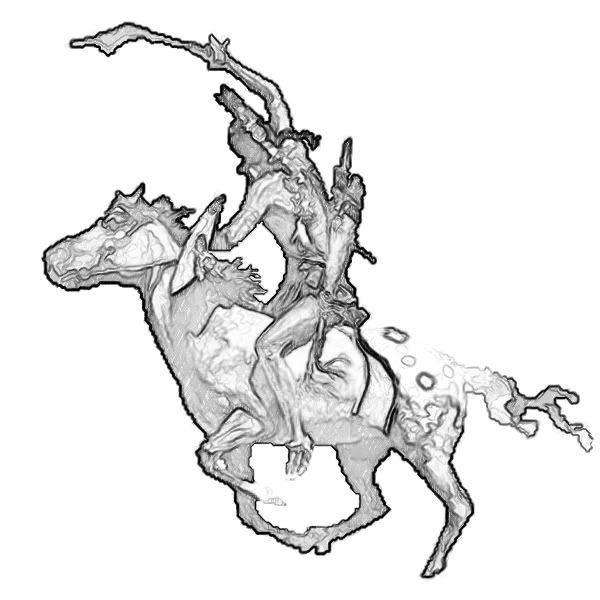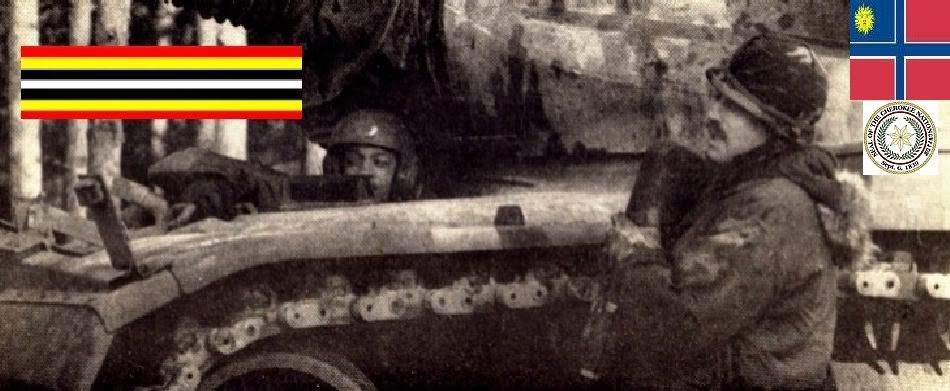|

Chief Little Crow
(1815-1863)
Warriors Citation
Little Crow was a principal figure in an effort by Sioux in Minnesota to break out of concentration camp-like conditions during
1862. The breakout, which resulted in widespread death and destruction on both sides, was often called the Great Sioux Uprising.
The resubjugation of the Sioux by settlers included the largest mass hanging in U.S. history. throughout the Midwest in the
last half of the nineteenth century, defeated Native Americans were forced into camps and promised supplies that often did
not arrive. Despite occasional exposes in the press, "Indian rings" made graft a fine art in the bureaucracy, siphoning goods
and money meant to purchase supplies. Native Americans, now cut off from their traditional hunting economy, had no other means
of survival. Some of the camp-bound Indians ate their horses, many of which also were starving. When they had finished with
the emaciated horses, the Indians gnawed the bark of trees- When the bark gave out, they starved to death, sometimes hundreds
at a time.
The Minnesota Sioux (Santee) signed a treaty in 1851 and moved onto reservations. By the early 1860s, the outbreak of the
Civil War caused the government to fall so far behind on providing food supplies and annuity payments that many Santees were
starving. By August 1862, the situation was so desperate that Santees from the Upper Agency (the northern part of the reservation)
broke into a government warehouse and took enough pork and flour to feed their families.

Santees under the jurisdiction of the Lower Agency, who also were starving, requested emergency rations. Native American agent
Thomas Galbraith flatly refused to supply the food, telling the Santees to "eat grass or their own dung." The desperation
of hunger, combined with Galbraith's insult, initiated the Great Sioux Uprising of 1862. Little Crow, then about sixty years
old, led the uprising, which began during the early hours of August 18, 1862, with strikes on outlying farms. The Native Americans
quickly killed several hundred settlers. Individuals with whom the Indians had specific grievances (such as the Indian trader
Andrew Myrick) were found slain with grass stuffed in their mouths. After three days of intensive rairing, reinforcements
joined army troops in the area, driving the Sioux back slowly, under orders from President Lincoln to quell the uprising at
any cost. Colonel Henry Hopkins Sibley took command of fourteen hundered men of the Third Minnesota Volunteer Regiment and
issued orders to "destroy everything they own and drive them out into the plains...They are to be treated as maniacs or wild
beasts," Sibley said. the Santees killed more than seven hundred settlers and one hundred soldiers befpre the army drove them
into the Plains. A large number of Santees who had not taken a direct role in the uprising stayed in Minnesota. Many christianized
Indians had risked their own lives to protect white settlers, They expected to be treated as neutrals, but the settlers' wrath
fell on them as well. After the uprising was quelled, a military court condemned 303 of 392 imprisoned Santees to death by
hanging. President Lincoln demanded a review of the sentences and cut the number to be executed to thirty-eight. Lincoln asserted
that each of these had taken part in the massacre, raped women, or both. The thirty-eight Santees died on a single scaffold
at Fort Mankato on December 26, 1862, in the largest mass hanging in U.S. history. William J. Dudley, who lost 2 children
to the Santees' scalping knives during the massacre, cut the rope that hung the Santees. The bodies of the executed men were
removed from their mass grave after nightfall by medical doctors, who used them as laboratory specimens. Army units trailed
the Santees who had escaped Minnesota to the Badlands of South Dakota, which Sibley called "hell with the fires out." On August
4, 1864, Sibley's forces killed more than five hundred Santee warriors in a single day. A dwindling number of survivors moved
westward and took shelter with the Cheyennes. They forced an alliance with General George A. Custer, whom they would face
at the Little Bighorn a dozen years later. Little Crow escaped Sibley's raids. He was later shot by a farmer while foraging
for berries. The farmer did not know until later that he had ended the life of the chief who started the Great Sioux Uprising.
The Minnesota legislature voted the farmer a $500 honorarium. On May 4 and 5, 1863, thirteen hundred neutral Santees, most
of them women and children, boarded two steamboats and went into exile from their homelands. Settlers on shore threw rocks
at them. From: historical accounts & records


LINK TO BRAVEHORSE WARRIORS VOLUME TWO
|

